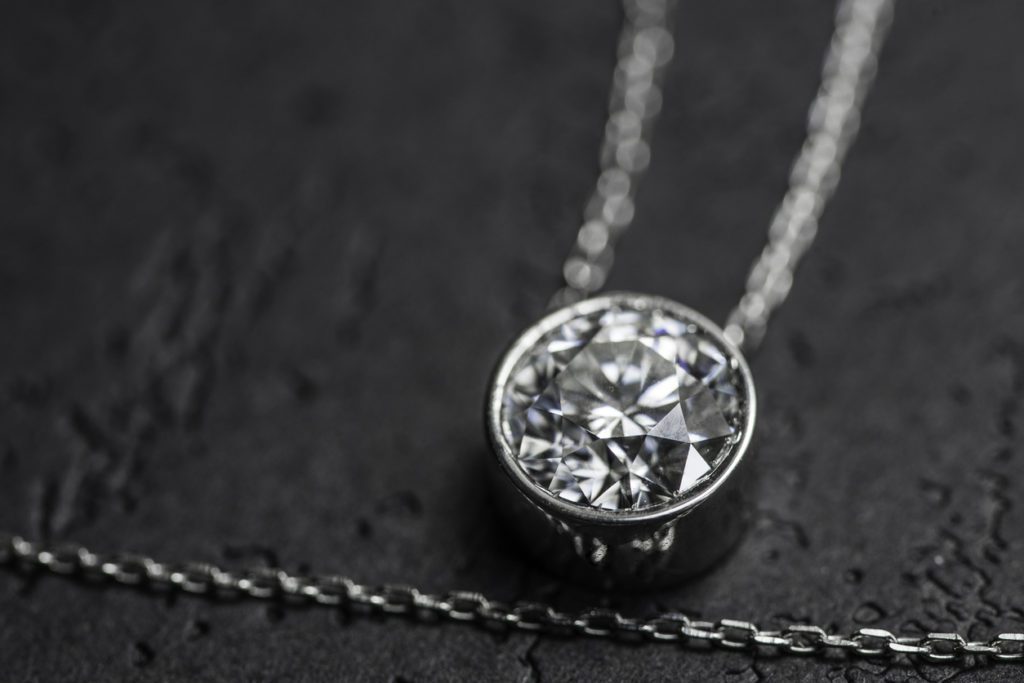Although white gold and silver have a similar appearance, they differ in many ways, including cost, upkeep, durability, and small differences in hue.
The crust of the planet contains naturally occurring metals like gold and silver. Both are soft metals that need to be mixed with other elements to create jewelry that can be worn.
To the untrained eye, comparing the advantages and disadvantages of white gold and sterling silver may seem pointless, because they essentially seem the same. But take a closer look; there are lots of distinctions to consider before you buy.
What is white gold, and what is silver?
Pure gold is combined with additional metals, known as alloys, to reinforce the product and give it a white appearance to produce white gold. White gold is frequently 14 or 18 karats in jewelry. In white gold, the “other metals” are frequently nickel, silver, or palladium. The specific characteristics of a piece of white gold jewelry are determined by the alloys used and the proportions of each alloy utilized.
(Berkut_34/Getty Images)
Contrarily, people use silver, a precious metal, in everything from electrical contacts and batteries to jewelry and dinnerware. By alone, silver is a soft metal. To give it more strength, jewelry makers combine it with an alloy, usually copper. Sometimes they do not use copper at all, or they use copper and nickel.
Both of them are beautiful. Maybe you’re drawn to the gleaming silver tones of sterling silver and white gold, but you’re unsure of the distinctions that give each metal composition its own identity. Here are some details on the variations to help you make a choice!
Color and appearance
Compared to silver, white gold is more brilliantly white and shiny. The white hue results from a mixture of alloy metals like nickel and pure yellow gold. You’ll need to locate a jeweler to have new rhodium plating applied to white gold when the surface rhodium mixture wears off.
Grayish-white is the color of silver. It will appear glossy when you purchase it from the jewelry store. Silver, however, gradually tarnishes and becomes dull due to an airborne reaction with hydrogen sulfide. However, contact with commonly found high-sulfur objects like mustard, hard-boiled eggs, and rubber bands can all hasten tarnishing. Hydrogen sulfide is not the only culprit.
(Rozaliya/Getty Images)
Durability
Because white gold contains stronger metal alloys than silver, it may be more durable. The amount of karats it contains can tell you how pure it is, which in turn can tell you how long it will last.
Silver is more prone to scratches and could deform with regular use. Because of this, many individuals choose white gold wedding bands to silver ones. Silver might be a decent option for jewelry items that will be worn less frequently, although not withstanding wear and tear as well as white gold.
Cost
Although the price of each will change depending on the market situation, gold is normally more valuable than silver. Silver is a moderately priced and accessible metal. This is certainly the best option if you’re on a tight budget, yet still want something authentic.
As a cheaper alternative to platinum, which can be highly expensive, white gold is frequently utilized. If you still like the same appearance as a platinum setting, white gold is a more affordable option.
It’s crucial to remember that just because white gold has been combined with other metals doesn’t mean its worth has decreased. The amount of genuine gold still used to determine the piece’s value will be the same as if it were yellow gold.
Tender and nurture
Silver and white gold both need distinct maintenance techniques to maintain their lustrous appearance.
Rhodium is often plated on white gold. A member of the platinum family of metals, rhodium helps shield your jewelry from scuffs. Rhodium turns from bright white to yellow over time.
You’ll need to take your white gold jewelry to a jeweler every few years, so they may reapply the Rhodium plating in order to restore it to its beautiful original state.
However, white gold is ideal for daily wear because it maintains its brilliant white appearance for longer. To prevent tarnishing, silver jewelry requires more frequent washing and polishing.
Different behavior
One reason is that silver is typically tougher than white gold. This implies that even though they appear identical, silver is trickier for a jeweler to work with when engraving precisely.
Frequently, names or messages are carved inside rings, brooches, and other jewelry pieces. Jewelers use white gold instead of silver, because it is more difficult to accomplish this with silver.
Additionally, as you know, silver can tarnish over time. A piece composed of vintage sterling silver polished to remove tarnish is readily apparent. Meanwhile, gold does not tarnish. White gold is the ideal metal for jewelry, since it never needs to be polished.
(Darunechka/Getty Images)
Conclusion
Which one is superior, then? It depends, is the response. Shopping for jewelry at Parker Pawn & Jewelry is all about options, therefore before choosing, it’s crucial to weigh the advantages and disadvantages of white gold and silver.
There are various uses for silver where it would be preferred. As a general rule, silver tends to be tougher than gold, making it more resistant to normal wear and tear. White gold, on the other hand, is more expensive and has the advantages of regular gold because it is made of gold.
Your particular demands will ultimately determine whether you want white gold or silver jewelry if you’re in the market for any. It stands to reason that you would pick white gold if you have sensitive skin. Additionally, it’s recommended to avoid silver if you don’t enjoy having to polish your jewelry.





